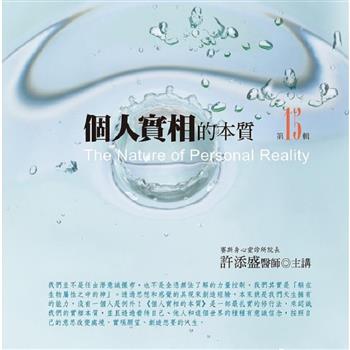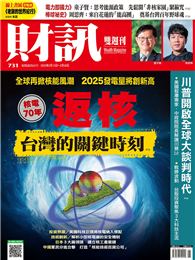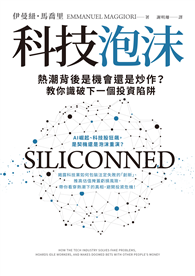《化學生物學》是依據分子生物學的中心法則組織編撰的,從有機化學——原子、化學鍵、化學反應機理角度聚焦生物大分子的化學、結構特點以及與其他分子的相互作用關係。全書共9章,其中:第1章和第2章分別介紹了化學生物學的基本原理和生物體的化學起源;第3~8章依次講述了人體細胞中的每一種生物分子——DNA、RNA、蛋白質、聚糖、聚酮以及萜類物質;第9章解釋了細胞調控生物分子產生的機制,通過對這章內容的學習,有助於加深學生對現代生物學、生理學以及醫學的理解。本書內容豐富,能提供給學生一個“化學-生物”雙培養的環境,更為讀者提供了一個瞭解生物分子合成與功能的化學藍圖。
《化學生物學》可作為普通高等教育化學生物學專業、藥學專業、生物技術專業、生物製藥專業等生物醫藥相關專業的本科生及研究生教材,也可供化學生物學研究領域的人員參考。
| FindBook |
有 1 項符合
化學生物學的圖書 |
 |
化學生物學 作者:(美)戴維·范·弗蘭肯 出版社:化學工業出版社 出版日期:2021-10-01 語言:簡體中文 規格:精裝 / 428頁 / 16k/ 19 x 26 x 5.99 cm / 普通級/ 單色印刷 / 1-1 |
| 圖書館借閱 |
| 國家圖書館 | 全國圖書書目資訊網 | 國立公共資訊圖書館 | 電子書服務平台 | MetaCat 跨館整合查詢 |
| 臺北市立圖書館 | 新北市立圖書館 | 基隆市公共圖書館 | 桃園市立圖書館 | 新竹縣公共圖書館 |
| 苗栗縣立圖書館 | 臺中市立圖書館 | 彰化縣公共圖書館 | 南投縣文化局 | 雲林縣公共圖書館 |
| 嘉義縣圖書館 | 臺南市立圖書館 | 高雄市立圖書館 | 屏東縣公共圖書館 | 宜蘭縣公共圖書館 |
| 花蓮縣文化局 | 臺東縣文化處 |
|
|
圖書介紹 - 資料來源:博客來 評分:
圖書名稱:化學生物學
內容簡介
目錄
第 1 章 化學生物學基礎(The Fundamentals of Chemical Biology) 1
1.1 分子生物學中心法則(The Central Dogma of Molecular Biology) 2
1.2基因(Genes) 3
1.3基因組(Genomes) 5
1.4 基因組以外的生物多樣性來源(Sources of Diversity Beyond Genomes) 9
1.5 組裝產生的多樣性(Combinatorial Assembly Generates Diversity) 11
1.6 一些常見的化學生物學工具(Some Common Tools of Chemical Biology) 15
1.7總結(Summary) 23
第 2 章 生物體的化學起源(The Chemical Origins of Biology) 25
2.1電子轉移機理是分子軌道理論的一種表達形式(Mechanistic Arrow-Pushing is an Expression of Molecular Orbital Theory) 25
2.2 氫鍵和質子轉移(Hydrogen Bonds and Proton Transfers) 30
2.3前生命化學(Prebiotic Chemistry) 34
2.4 非鍵相互作用(Nonbonding Interactions) 39
2.5 模組化設計的魅力(The Power of Modular Design) 44
2.6總結(Summary) 48
第 3 章 DNA 53
3.1DNA的結構形式(Forms of DNA) 54
3.2 DNA的核糖核酸亞基(The Ribonucleotide Subunits of DNA) 55
3.3 DNA中的基本作用力(Elementary Forces in DNA) 59
3.4DNA超結構(DNA Superstructure) 67
3.5 聚合酶介導的DNA生物合成(The Biological Synthesis of DNA by Polymerase Enzymes) 72
3.6 DNA的化學合成(The Chemical Synthesis of DNA) 76
3.7 DNA分子的電泳分離(Separation of DNA Molecules by Electrophoresis) 85
3.8 DNA重組技術(Recombinant DNA Technology) 90
3.9 核酸光化學(Nucleic Acid Photochemistry) 95
3.10 DNA作為細胞毒性藥物的靶標(DNA as a Target for Cytotoxic Drugs) 97
3.11總結(Summary) 113
第 4 章 RNA 119
4.1RNA的結構(RNA Structure) 120
4.2RNA的合成(RNA Synthesis) 126
4.3 轉錄調控(Transcriptional Control) 128
4.4 真核生物的mRNA加工(mRNA Processing in Eukaryotes) 135
4.5 RNA的受控降解(Controlled Degradation of RNA) 139
4.6 mRNA被核糖體翻譯成蛋白質(Ribosomal Translation of mRNA into Protein) 142
4.7 從寡核苷酸庫到蛋白質庫(From Oligonucleotide Libraries to Protein Libraries) 156
4.8總結(Summary) 159
第 5 章 多肽和蛋白質的結構(Peptide and Protein Structure) 163
5.1 氨基酸和多肽(Amino Acids and Peptides) 164
5.2 固相多肽合成(Solid-Phase Peptide Synthesis) 169
5.3 決定蛋白質二級結構的基本作用力(Fundamental Forces that Control Protein Secondary Structure) 181
5.4 二硫鍵交聯的化學(The Chemistry of Disulfide Crosslinks) 188
5.5 蛋白質結構域的結構和功能(Protein Domains Have Structural and Functional Roles) 191
5.6 更高層級的蛋白質結構(Higher Levels of Protein Structure) 200
5.7總結(Summary) 201
第 6 章 蛋白質功能(Protein Function) 209
6.1 受體-配體相互作用(Receptor-Ligand Interactions) 210
6.2 從定量角度認識酶功能(A Quantitative View of Enzyme Function) 216
6.3 多步反應酶催化機制(A Mechanistic View of Enzymes that Catalyze Multistep Reactions) 219
6.4 有機輔酶因數(Enzymes that Use Organic Cofactors) 240
6.5 蛋白質工程改造(Engineering Improved Protein Function) 245
6.6總結(Summary) 251
第 7 章 糖生物學(Glycobiology) 255
7.1結構(Structure) 255
7.2 糖苷鍵的化學和酶學(The Chemistry and Enzymology of the Glycosidic Bond) 260
7.3多糖(Polysaccharides) 269
7.4糖蛋白(Glycoproteins) 272
7.5糖脂(Glycolipids) 286
7.6 細胞內的糖基化(Glycosylation in the Cytosol) 288
7.7 寡糖的化學合成(Chemical Synthesis of Oligosaccharides) 290
7.8 與糖配體結合的蛋白質(Proteins that Bind to Carbohydrate Ligands) 293
7.9 葡萄糖穩態與糖尿病(Glucose Homeostasis and Diabetes) 301
7.10總結(Summary) 306
第 8 章 聚酮和萜類(Polyketides and Terpenes) 309
8.1 聚酮生物合成中的克萊森反應(The Claisen Reaction in Polyketide Biosynthesis) 310
8.2 聚酮生物合成範例:脂肪酸生物合成(The Biosynthesis of Fatty Acids is a Paradigm for Polyketides Biosynthesis) 312
8.3 人源聚酮的生物學功能(The Biological Role of Human Polyketides) 317
8.4 非人源聚酮類天然產物(Nonhuman Polyketides Natural Products) 330
8.5 非核糖體肽合成酶(Nonribosomal Peptide Synthases) 337
8.6人源萜類(Human Terpenes) 338
8.7 非人源萜類天然產物(Nonhuman Terpene Natural Products) 351
8.8小結(Summary) 358
第 9 章 信號轉導的化學調控(Chemical Control of Signal Transduction) 363
9.1 信號轉導(Singal Transduction) 365
9.2 人體細胞中的信號通路概述(An Overview of Signal Transduction Pathways in Human Cells) 369
9.3核受體(Nuclear Receptors) 372
9.4與轉錄因數直接相互作用的細胞表面受體(Cell-Surface Receptors that Interact Directly with Transcription Factors) 380
9.5 受體酪氨酸激酶(Receptor Tyrosine Kinases) 385
9.6 G蛋白偶聯受體(G Protein-Coupled Receptors,GPCR) 395
9.7 離子通道受體(Ion Channel Receptors) 408
9.8 三聚化死亡受體(Trimeric Death Receptors) 414
9.9 氣體小分子信號轉導通路(Pathways Controlled by Small Diffusible Gas Molecules) 416
9.10總結(Summary) 418
1.1 分子生物學中心法則(The Central Dogma of Molecular Biology) 2
1.2基因(Genes) 3
1.3基因組(Genomes) 5
1.4 基因組以外的生物多樣性來源(Sources of Diversity Beyond Genomes) 9
1.5 組裝產生的多樣性(Combinatorial Assembly Generates Diversity) 11
1.6 一些常見的化學生物學工具(Some Common Tools of Chemical Biology) 15
1.7總結(Summary) 23
第 2 章 生物體的化學起源(The Chemical Origins of Biology) 25
2.1電子轉移機理是分子軌道理論的一種表達形式(Mechanistic Arrow-Pushing is an Expression of Molecular Orbital Theory) 25
2.2 氫鍵和質子轉移(Hydrogen Bonds and Proton Transfers) 30
2.3前生命化學(Prebiotic Chemistry) 34
2.4 非鍵相互作用(Nonbonding Interactions) 39
2.5 模組化設計的魅力(The Power of Modular Design) 44
2.6總結(Summary) 48
第 3 章 DNA 53
3.1DNA的結構形式(Forms of DNA) 54
3.2 DNA的核糖核酸亞基(The Ribonucleotide Subunits of DNA) 55
3.3 DNA中的基本作用力(Elementary Forces in DNA) 59
3.4DNA超結構(DNA Superstructure) 67
3.5 聚合酶介導的DNA生物合成(The Biological Synthesis of DNA by Polymerase Enzymes) 72
3.6 DNA的化學合成(The Chemical Synthesis of DNA) 76
3.7 DNA分子的電泳分離(Separation of DNA Molecules by Electrophoresis) 85
3.8 DNA重組技術(Recombinant DNA Technology) 90
3.9 核酸光化學(Nucleic Acid Photochemistry) 95
3.10 DNA作為細胞毒性藥物的靶標(DNA as a Target for Cytotoxic Drugs) 97
3.11總結(Summary) 113
第 4 章 RNA 119
4.1RNA的結構(RNA Structure) 120
4.2RNA的合成(RNA Synthesis) 126
4.3 轉錄調控(Transcriptional Control) 128
4.4 真核生物的mRNA加工(mRNA Processing in Eukaryotes) 135
4.5 RNA的受控降解(Controlled Degradation of RNA) 139
4.6 mRNA被核糖體翻譯成蛋白質(Ribosomal Translation of mRNA into Protein) 142
4.7 從寡核苷酸庫到蛋白質庫(From Oligonucleotide Libraries to Protein Libraries) 156
4.8總結(Summary) 159
第 5 章 多肽和蛋白質的結構(Peptide and Protein Structure) 163
5.1 氨基酸和多肽(Amino Acids and Peptides) 164
5.2 固相多肽合成(Solid-Phase Peptide Synthesis) 169
5.3 決定蛋白質二級結構的基本作用力(Fundamental Forces that Control Protein Secondary Structure) 181
5.4 二硫鍵交聯的化學(The Chemistry of Disulfide Crosslinks) 188
5.5 蛋白質結構域的結構和功能(Protein Domains Have Structural and Functional Roles) 191
5.6 更高層級的蛋白質結構(Higher Levels of Protein Structure) 200
5.7總結(Summary) 201
第 6 章 蛋白質功能(Protein Function) 209
6.1 受體-配體相互作用(Receptor-Ligand Interactions) 210
6.2 從定量角度認識酶功能(A Quantitative View of Enzyme Function) 216
6.3 多步反應酶催化機制(A Mechanistic View of Enzymes that Catalyze Multistep Reactions) 219
6.4 有機輔酶因數(Enzymes that Use Organic Cofactors) 240
6.5 蛋白質工程改造(Engineering Improved Protein Function) 245
6.6總結(Summary) 251
第 7 章 糖生物學(Glycobiology) 255
7.1結構(Structure) 255
7.2 糖苷鍵的化學和酶學(The Chemistry and Enzymology of the Glycosidic Bond) 260
7.3多糖(Polysaccharides) 269
7.4糖蛋白(Glycoproteins) 272
7.5糖脂(Glycolipids) 286
7.6 細胞內的糖基化(Glycosylation in the Cytosol) 288
7.7 寡糖的化學合成(Chemical Synthesis of Oligosaccharides) 290
7.8 與糖配體結合的蛋白質(Proteins that Bind to Carbohydrate Ligands) 293
7.9 葡萄糖穩態與糖尿病(Glucose Homeostasis and Diabetes) 301
7.10總結(Summary) 306
第 8 章 聚酮和萜類(Polyketides and Terpenes) 309
8.1 聚酮生物合成中的克萊森反應(The Claisen Reaction in Polyketide Biosynthesis) 310
8.2 聚酮生物合成範例:脂肪酸生物合成(The Biosynthesis of Fatty Acids is a Paradigm for Polyketides Biosynthesis) 312
8.3 人源聚酮的生物學功能(The Biological Role of Human Polyketides) 317
8.4 非人源聚酮類天然產物(Nonhuman Polyketides Natural Products) 330
8.5 非核糖體肽合成酶(Nonribosomal Peptide Synthases) 337
8.6人源萜類(Human Terpenes) 338
8.7 非人源萜類天然產物(Nonhuman Terpene Natural Products) 351
8.8小結(Summary) 358
第 9 章 信號轉導的化學調控(Chemical Control of Signal Transduction) 363
9.1 信號轉導(Singal Transduction) 365
9.2 人體細胞中的信號通路概述(An Overview of Signal Transduction Pathways in Human Cells) 369
9.3核受體(Nuclear Receptors) 372
9.4與轉錄因數直接相互作用的細胞表面受體(Cell-Surface Receptors that Interact Directly with Transcription Factors) 380
9.5 受體酪氨酸激酶(Receptor Tyrosine Kinases) 385
9.6 G蛋白偶聯受體(G Protein-Coupled Receptors,GPCR) 395
9.7 離子通道受體(Ion Channel Receptors) 408
9.8 三聚化死亡受體(Trimeric Death Receptors) 414
9.9 氣體小分子信號轉導通路(Pathways Controlled by Small Diffusible Gas Molecules) 416
9.10總結(Summary) 418
序
化學生物學是研究生命過程中化學基礎的學科,更是一門新興交叉學科。它通過外源化學手段,對生命體系中的分子進行精准地識別、闡釋、修飾和調控,通過充分發揮化學和生物學、醫學交叉的優勢,揭示生物學新規律,促進新藥、新靶標和新的作用機制的發現,為人類健康研究方向提供新策略、方法與分子工具,為人類社會發 展服務。
當前,國內眾多高校相繼成立了化學生物學系或開設了化學生物學專業,旨在通過向學生傳授化學與生物學相關的知識,給學生提供一個“雙培養”的環境,使學生更好地理解現代化學和複雜生物學研究的密切關係。然而國內化學生物學教材版本太少,且已出版的圖書大都為科技書專著形式,內容主要涉及當代先進的化學生物研究方法與技術,但是如何從本質上有效地以化學視角揭示生物學奧秘仍是難題。 這也正是《Introduction to Bioorganic Chemistry and Chemical Biology》(David Van Vranken, Gregory A. Weiss, 2013)一書的亮點之處。這本教科書為讀者提供了一個全面瞭解生物分子合成與功能的化學藍圖。原著遵從分子生物學的中心法則,以基因水準為起點,從有機化學角度聚焦生物分子——DNA、RNA、蛋白質、聚糖、聚酮以及萜類,用有機化學思維——從原子、化學鍵、化學反應機理視角,闡述生物體內眾多分子的化學性質、結構特點以及分子間的相互作用關係。通過本書的學習,您會慢慢發現分子生物學中心法則之外的“化學法則”是生命起源的基礎。本書內容全面,深淺適宜,特色鮮明,可以作為本科生與研究生學習化學生物學基礎知識的教材,也可供對 化學生物學有興趣的研究人員參考。
本書的翻譯工作得以順利開展,要衷心感謝來自北京大學、清華大學、武漢大學、中國醫學科學院&北京協和醫學院藥物研究所、中國科學院化學研究所的20位元化學生物學教學與科研一線的專家們,是他們認真嚴謹的工作作風和科研態度保障了本書翻譯內容的準確性;感謝國家自然科學基金委員會交叉科學部和化學科學部的前瞻性支持和重要引領,得以在短短一個月內將翻譯隊伍組織起來,賦予各位譯者以激情;感謝張禮和院士為本書作序並擔任本書的主審;感謝化學工業出版社優秀教材發展基金專案的支持,以及嚴謹的編校工作;感謝中國醫學科學院&北京協和醫學院研究生教學改革項目的資助。
合抱之木,生於毫末;九層之台,起於累土。希望本書能為化學生物學基礎教育提供新的助力。
最後,謹向廣大讀者朋友們致以美好的祝願!
張豔、胡海宇、陳擁軍
2021年4月
當前,國內眾多高校相繼成立了化學生物學系或開設了化學生物學專業,旨在通過向學生傳授化學與生物學相關的知識,給學生提供一個“雙培養”的環境,使學生更好地理解現代化學和複雜生物學研究的密切關係。然而國內化學生物學教材版本太少,且已出版的圖書大都為科技書專著形式,內容主要涉及當代先進的化學生物研究方法與技術,但是如何從本質上有效地以化學視角揭示生物學奧秘仍是難題。 這也正是《Introduction to Bioorganic Chemistry and Chemical Biology》(David Van Vranken, Gregory A. Weiss, 2013)一書的亮點之處。這本教科書為讀者提供了一個全面瞭解生物分子合成與功能的化學藍圖。原著遵從分子生物學的中心法則,以基因水準為起點,從有機化學角度聚焦生物分子——DNA、RNA、蛋白質、聚糖、聚酮以及萜類,用有機化學思維——從原子、化學鍵、化學反應機理視角,闡述生物體內眾多分子的化學性質、結構特點以及分子間的相互作用關係。通過本書的學習,您會慢慢發現分子生物學中心法則之外的“化學法則”是生命起源的基礎。本書內容全面,深淺適宜,特色鮮明,可以作為本科生與研究生學習化學生物學基礎知識的教材,也可供對 化學生物學有興趣的研究人員參考。
本書的翻譯工作得以順利開展,要衷心感謝來自北京大學、清華大學、武漢大學、中國醫學科學院&北京協和醫學院藥物研究所、中國科學院化學研究所的20位元化學生物學教學與科研一線的專家們,是他們認真嚴謹的工作作風和科研態度保障了本書翻譯內容的準確性;感謝國家自然科學基金委員會交叉科學部和化學科學部的前瞻性支持和重要引領,得以在短短一個月內將翻譯隊伍組織起來,賦予各位譯者以激情;感謝張禮和院士為本書作序並擔任本書的主審;感謝化學工業出版社優秀教材發展基金專案的支持,以及嚴謹的編校工作;感謝中國醫學科學院&北京協和醫學院研究生教學改革項目的資助。
合抱之木,生於毫末;九層之台,起於累土。希望本書能為化學生物學基礎教育提供新的助力。
最後,謹向廣大讀者朋友們致以美好的祝願!
張豔、胡海宇、陳擁軍
2021年4月
|










